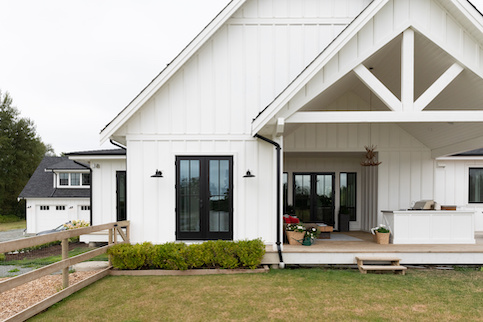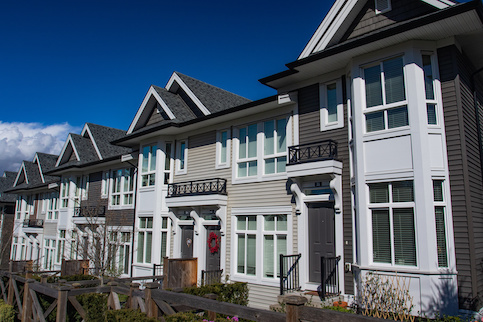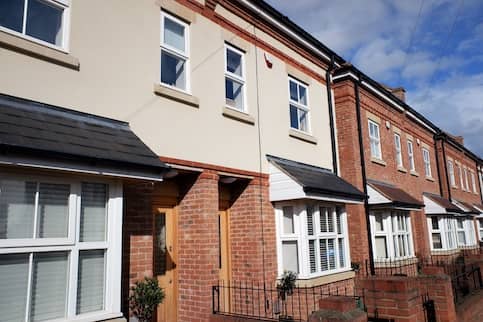A mortgage-backed security, or MBS, is an investment in a collection of home mortgages the original lenders have sold to another entity. Mortgage-backed securities appeal to investors because the risk of default is spread across hundreds or thousands of mortgages instead of a single borrower. Many investors buy mortgage-backed securities to diversify their portfolios.
Investing in mortgages is considered relatively safe, though the collapse of home values that led to the 2008 financial crisis showed that mortgage-backed securities are not risk-free. Learning about MBSs and how they work can help you decide if they are a good investment.
Key Takeaways:
- Mortgage-backed securities are asset-backed investment products that are composed of home loans, which are purchased from the issuers and then bundled and sold to investors.
- The three main types of mortgage-backed securities are pass-throughs, collateralized mortgage obligations and stripped mortgage-backed securities.
- As an investor, you should understand the risks and benefits of mortgage-backed securities.
What Are Mortgage-Backed Securities?
Many homeowners are notified after buying a home that their mortgage has been sold to an investor. While a new mortgage servicer takes over processing their loan payments, the terms of the loan and the monthly payment remain unchanged.
The investor group or government-sponsored enterprise – such as Ginnie Mae, Fannie Mae or Freddie Mac – that buys your mortgage will pool your loan and thousands of similar mortgages into an MBS. It then sells shares of the mortgage-backed security to investors, who receive payments as the mortgages making up the MBS are paid off.
GSE-backed mortgage-backed securities come with various guarantees of timely payments to investors. Private entities or banks offer what are known as private-label or non-agency mortgage-backed securities. These investments are not backed by or guaranteed by a government agency and often are made up of non-conforming loans, jumbo loans or interest-only mortgages.
The return on a mortgage-backed security is based on a percentage of all the principal and interest payments associated with that particular bundle of mortgages. The individual investor’s return is based on the size of their stake in the MBS.
History Of Mortgage-Backed Securities
Mortgage-backed securities date back to the Housing and Urban Development Act of 1968, which created the Government National Mortgage Association, or Ginnie Mae, which was split off from Fannie Mae. Initially, mortgage-backed securities were backed by the U.S. government, which guaranteed returns. The purpose was to allow banks to sell off mortgages so that they would have funds to issue additional mortgages.
The Financial Crisis Of 2008
The market for mortgage-backed securities for years was unregulated, leaving it vulnerable to loans issued by lenders that lowered their standards for who could receive a mortgage. In the years leading up to the financial crisis of 2008, thousands of mortgages were issued to borrowers with no down payment or income verification.
Defaults on these loans caused the value of mortgage-backed securities to collapse, wiping out massive amounts of wealth and provoking a financial crisis. In the aftermath of the crisis, the Federal Reserve purchased over $1 trillion in mortgage-backed securities to stabilize the economy.
Mortgage-Backed Securities Today
In 2010, President Barack Obama signed the Dodd-Frank Wall Street Reform and Consumer Protection Act, which required more documentation and disclosures for mortgage-backed securities.
In 2019, the Federal Housing Finance Agency directed Freddie Mac and Fannie Mae to establish the universal mortgage-backed security. The UMBS is meant to be interchangeable, establishing a single, liquid market for GSE-issued mortgage-backed securities, which are backed by each agency’s single-family fixed-rate mortgages.
What’s Your Goal?
Buy A Home
Discover mortgage options that fit your unique financial needs.

Refinance
Refinance your mortgage to have more money for what matters.
Tap Into Equity
Use your home’s equity and unlock cash to achieve your goals.
How Mortgage-Backed Securities Work
The initial interaction between lenders and borrowers when they take out a new mortgage to buy a home is referred to as the primary mortgage market. Ownership of the mortgage debt is traded in the secondary market.
If you have a conforming conventional loan, you can expect your lender to sell it to Fannie Mae or Freddie Mac, while Ginnie Mae buys loans backed by the Federal Housing Administration, the U.S. Department of Agriculture and Veterans Affairs.
Whichever entity buys your mortgage will bundle it with similar mortgages, divide them into shares via securitization, and sell them to pension funds, mutual funds, insurance companies, banks and individual investors.
You pay your monthly mortgage payment to your loan servicer, which takes a servicing fee and sends the rest to the GSE that bought your loan. The GSE will take a guarantee fee from all the payments it receives in a mortgage-backed security and distribute the rest among shareholders.
Mortgage-backed securities typically have a stated maturity date, reflecting the point where the component loans are fully repaid. The returns on a mortgage-backed security can be affected by more loans being paid off earlier than expected.
Ready To Become A Homeowner?
Get matched with a lender that can help you find the right mortgage.
Types Of Mortgage-Backed Securities
There are three main types of mortgage-backed securities.
Pass-Throughs
This is the most common type of mortgage-backed security, where payments from individual mortgages are collected by a trust and then passed along to investors. With pass-throughs, investors receive a monthly pro rata distribution made up of homeowners’ principal and interest payments toward their mortgages.
Collateralized Mortgage Obligations
A collateralized mortgage obligation is a type of MBS in which mortgages are collected into groups called tranches, each of which has its own risk level and maturity date. The main advantage to a CMO is the ability to invest in an MBS with a specific level of risk and potential return.
Stripped Mortgage-Backed Securities
This type of pass-through mortgage-backed security separates the mortgage payments it collects into principal and interest. Investors can buy a security backed by either the principal or the interest payments. As with a homeowner’s payment schedule, the principal payments begin small and grow over time, while the interest payments start large and shrink.
View Your Refinancing Options
Find a refinance lender that will work with your unique financial situation.
How To Buy Mortgage-Backed Securities
Large institutional investors buy the largest share of mortgage-backed securities, but individuals also can invest in mortgage-backed securities.
The simplest way to do this is by purchasing MBS exchange-traded funds. ETFs are similar to mutual funds in that they offer investors a share of a professionally managed, diversified portfolio of stocks, bonds and other assets, but they trade like stocks.
“Individuals can purchase shares of an MBS through exchange-traded funds on marketplaces such as iShares,” says Greg Merrill, President at Strategic Asset Management in Tacoma, Washington.
You might find you’re already indirectly investing in mortgage-backed securities through your company’s pension fund, as pension funds comprise a significant portion of MBS investors.
Pros And Cons Of Investing In Mortgage-Backed Securities
Consider the benefits and risks if you’re thinking about investing in mortgage-backed securities.
Pros
- Safe investments. Because mortgage-backed securities are backed by residential home mortgages, they’re considered safer than many other investments. Even if people get into financial trouble, they prioritize their house payments, so investors will likely be paid as scheduled. Moreover, agency MBSs guarantee investors receive timely repayment even in the event of foreclosure.
- Appealing yields. Mortgage-backed security yields can be higher than other investments, such as U.S. government bonds.
- You can choose your risk tolerance. You can get a higher or lower yield by looking at the prices you’re willing to pay and the types of mortgages underlying the MBS.
- They don’t correlate with other investments. There’s little connection between the performance of mortgage-backed securities and other investments, such as the stock market or corporate bonds. This allows investors to use mortgage-backed securities to diversify their holdings and hedge against losses in other areas.
Cons
- Risk of prepayment. If too many people repay their mortgage early, you will earn less interest. This risk can increase when mortgage rates drop, making it attractive for homeowners to refinance their loans. This risk can make your overall returns difficult to predict.
- The return may not always keep up with inflation. Mortgage-backed securities are generally low-risk investments, which often means a low return. If inflation is high enough and the monthly yield from your investment remains the same, you could earn less money in terms of actual spending power.
- Reliance on the market. Even though mortgage-backed securities are diversified across numerous mortgages, they still depend on residential real estate loans. If that market declines, then MBS investments will follow.
Who Should Invest In Mortgage-Backed Securities?
Investors looking to diversify and get a higher yield than Treasurys are good candidates for investing in mortgage-backed securities, says Doug Carey, a Chartered Financial Analyst and Founder of WealthTrace, a financial and retirement planning software company in Zionsville, Indiana.
“(They) are a bit riskier, so you need to have a higher risk tolerance than (you do with) Treasury bonds,” he says.
FAQ
Here are answers to common questions about mortgage-backed securities.
The Bottom Line
Mortgage-backed securities provide investors with solid returns while ensuring a vibrant lending market for borrowers. While the public’s view of mortgage-backed securities may be clouded by their role in the 2008 financial crisis, they are vital to the lending and investing markets.
More From Quicken Loans:
- What Are Mortgage Bonds And How Do They Work?
- What Are Commercial Mortgage-Backed Security Loans? A Guide
- How To Invest In Real Estate: A Beginner’s Guide
- Types Of Real Estate Investments: A Complete Guide
- How To Invest In Property Without Buying A House: Ways To Build Wealth
- Is Real Estate A Good Investment? What You Should Know
Kevin Graham contributed to the reporting of this article.

Jason Steele
Jason Steele is a freelance writer and an expert in credit cards, travel and general personal finance. He has been writing about personal finance since 2008, and is widely recognized as one of the leading experts in this industry. He also produces CardCon, the annual conference for journalists who cover credit cards and consumer credit.












